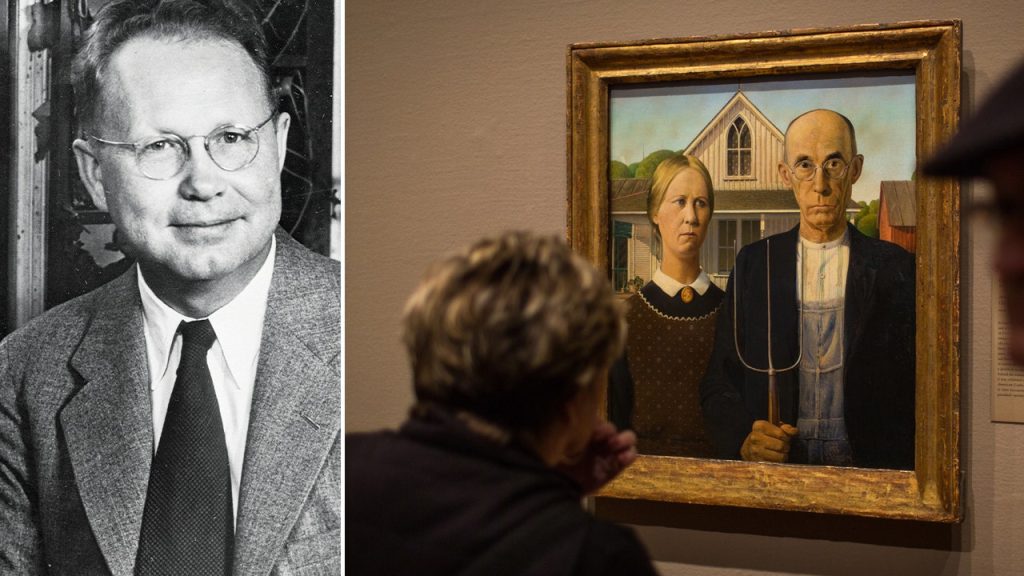“American Gothic” by Grant Wood is a famous piece of artwork that depicts a man and a woman standing in front of a house. The man is a farmer wearing overalls and holding a pitchfork, while the woman has a stern expression on her face. The relationship between the two is unknown, but the painting may depict a husband and wife or a father and daughter. Wood used his sister Nan and his dentist, Dr. B.H. McKeeby, as models for the pair in the painting, which was completed in 1930. The background house was inspired by one Wood saw in Eldon, Iowa.
The house in the painting is built in the Carpenter Gothic style popular in the 1880s. After completing the painting, Wood submitted it to the Art Institute of Chicago where it was accepted into a major show. He won the Norman Wait Harris Bronze Award for his masterpiece and received $300 as his prize. The painting has remained at the Art Institute of Chicago, where it quickly grew in popularity. Despite public interest in trying to interpret the story behind the painting, Wood repeatedly rejected the notion that it was meant to be a satirical take on the Midwest. He intended for the painting to convey a positive image of rural American values, offering reassurance during the Great Depression.
The mystery surrounding the relationship between the man and the woman in “American Gothic” adds to its intrigue and appeal. The painting has sparked much speculation and interpretation over the years. While some believe it depicts a husband and wife, others see a father and daughter. Wood’s use of his sister and dentist as models for the painting adds a personal touch to the artwork. The Carpenter Gothic style of the house in the background contributes to the overall aesthetic of the painting, capturing a snapshot of American rural life in the early 20th century.
Despite the varying interpretations of the painting, Wood’s intention to portray positive rural American values remains clear. The painting was created during a time of economic hardship, and Wood sought to offer a vision of reassurance to the public. The success and enduring popularity of “American Gothic” can be attributed to its ability to evoke nostalgia for simpler times and to embody the enduring spirit of the American heartland. The painting continues to be celebrated as a quintessential representation of American art and cultural identity.
In conclusion, “American Gothic” by Grant Wood remains a timeless and iconic piece of American artwork. The painting’s depiction of a farmer and a stern-faced woman standing in front of a Carpenter Gothic house has captivated audiences for decades. Despite the mystery surrounding the relationship between the two figures, the painting continues to offer a glimpse into rural American life in the early 20th century. Grant Wood’s intention to convey a positive image of rural American values shines through in this masterpiece, which has stood the test of time and remains an enduring symbol of American art and culture.













